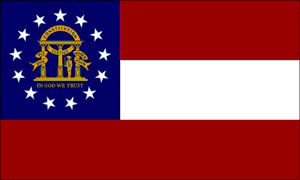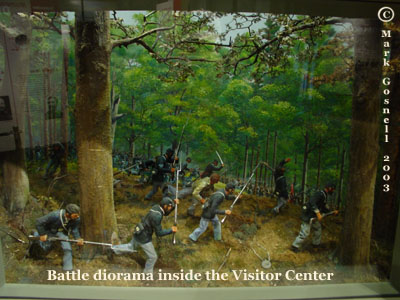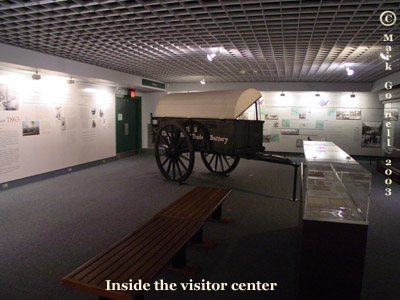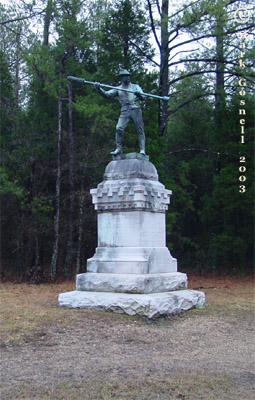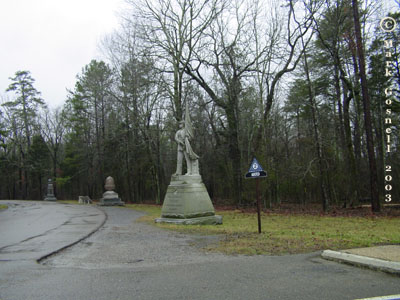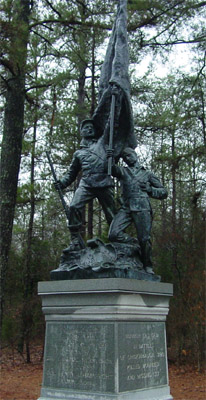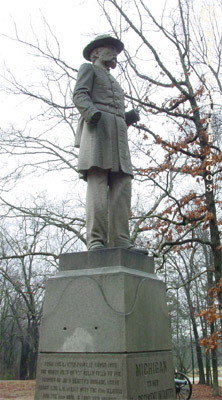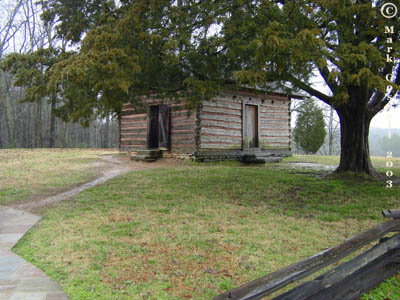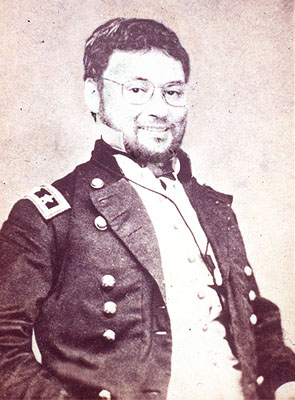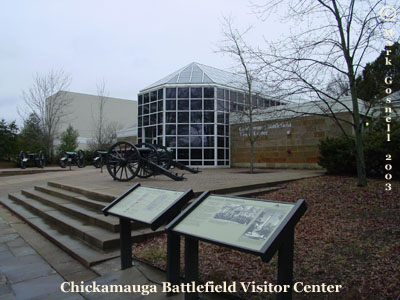|
|
|
|
CHICKAMAUGA BATTLEFIELD, GEORGIA
A rainy Sunday morning, February 16, 2003 brought me to
the Chickamauga Battlefield Visitors Center.
Around 1890, Congress established the first four national
military parks: Chickamauga and Chattanooga, Shiloh, Gettysburg, and Vicksburg.
The first and largest of these, and the one upon which all future parks
would be based was Chickamauga and Chattanooga.
The canons that welcomed me into the beautiful glass and
brick building was interesting to observe. Although non-working, it was
captivating to stand by one of these monsters of destruction, and replay
in my mind what it must have been like to be on one of the crews firing
down range. The smoke unfurling from the mouth of the canon as the shot
sped away to do the damage it was designed to mass on the enemy. Smoke
so thick, after a few rounds being fired, no one was sure what they were
hitting, even if anything at all.
|
|
| |
|
|
This diorama is inside the visitors center. It shows a
small portion of the battle that took place September 19, and September
20, 1863. During these two days, the combination of loses for both armies
was over 19,000 casualties. The bloodiest two days in America's history.
The visitors center contained several displays ranging
from a officers tent to a whole room dedicated to the different rifles
used during the civil war.
Make sure to sign the guest book that is located next
to the rangers desk. Give it a look, see all the visitors from all across
the country and from all the world. Over a million visitors visit this
battlefield a year.
|
|
| |
|
|
As I wandered throughout the visitors center my mind went
back to the time of the war and how the loses suffered effected those
who had to live through it. The clean and well kept building that houses
all of these artifacts of the past, was a far cry from the conditions
placed by the men fighting the battle and the sorrow felt by the loved
ones on both sides of the battle.
The walls were covered with displays that offered the
visitor a chance to see time lines of what happened and when it happened.
A small store located within, offered me a chance to buy
a cd of a driving tour of the battlefield, gladly I laid down the $10.50
for the presentation to come.
|
|
| |
|
| The first stop along my audio tour.
Aged over time and weather, the patina on this monument was exquisite. The
fine details enhanced even more because of it. The figural monuments brought
home the fact that men fought these wars. This man could have been a butcher,
a shoe maker or even a business man. Lives were dramatically altered as
the war took its terrible toll. This monument represents a soldier holding
a ramrod. It is dedicated to the Confederate Tennessee Artillery |
|
| After reaching the second stop
along the audio tour, it began raining once again. The sky was gray and
dark. It looked as tho the rain had settled in for the day. In the distance
you can see the world's largest acorn. No, not really, this monument represents
the corps badge of the 14th corps. I'm not sure what the monument is in
front of it. I should have wrote the information down while I was there.
I need to remember that the next time I go on a vacation. |
|
| Pennsylvania veteran volunteer
infantry |
|
| Georgia Monument, |
|
| Wilder Monument, I parked down
the hill, walked the paved sidewalk up the hill. turning occasionally to
look down on the battlefield. The Wilder Monument is the tallest on the
Chickamauga Battlefield. Most of the year the top can be accessed through
a spiral staircase. I was unlucky in the fact that I decided to take my
vacation in February. The top was still closed up to prevent the weather
changes from tearing the monument apart. |
|
| view from the Wilder Monument.
looking down over the battlefield. high ground was very important during
the Civil War. if the artillery was moved into position correctly, it could
rain down destruction among the enemy troops. |
|
| Union Col. Mudge.A little bit of
history for you so you can understand what importance this battle means
in the overall scope of the Civil War. During two days in September 1863,
a battle was waged that would prove to be the bloodiest two days in American
history. Although a total victory for the Confederate Army, the southern
forces were unable to take full advantage of the rout. The strong will and
fortitude of one man, General George H. Thomas, saved the day for the Union
forces. He fell back to a position on top a hill that was easily defendable
where he then distributed his troops to cover the retreat of the main Union
force. The Confederate forces tried to dislodge him from his defenses, until
nighttime set on the second day. His men then could retreat the twelve miles
to Chattanooga, Tennessee. His courage stopped the western union army from
being destroyed. |
Small 157kb MP3 Sample of the audio tour.
CLICK
TO DOWNLOAD
|
| |
|
| Ok, this isn't a real Civil War General, but
my head slapped on a old photo with the aid of a little photoshop trickery.
Dang, I can be cute sometimes! |
|
|
|
|
Email: wrkmdg@yahoo.com
|
Page URL: https://mgos66.tripod.com/chick.htm
|
|
©2003 Mark Gosnell
|
